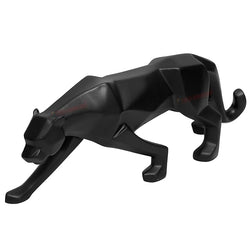The arrival of monsoon brings joy—and challenges—for plant lovers in India. Heavy rains, humidity, and waterlogging create conditions perfect for root rot, mold, and stressed plants. This guide covers practical monsoon plant care with eco‑planters, ensuring your green space thrives even during heavy showers.
Why Monsoon Plant Care Matters
-
Monsoon plant care is critical to prevent root rot and fungal growth.
-
Sustainable planters India must offer good drainage and breathability.
-
Eco-friendly indoor planters are gaining popularity amid increasing humidity levels.
🌿 Monsoon-Proofing Your Eco Planters
1. Choose the right planter
-
Opt for eco‑planters made from rice husk, coffee husk, or bamboo fiber—materials that wick moisture and reduce water retention
-
Opt for recycled metal planters with powder coating, enamel, or electroplating—they offer water resistance, durability, and longevity during the monsoon. Just ensure proper drainage with inserts or liners, and you’re good to go.
-
Ensure they include built-in drainage holes and saucers for excess water management.
2. Proper drainage setup
-
Line the base with pebbles or charcoal before adding soil to promote aeration.
-
Consider self‑watering models that shield roots during heavy rainfall .
3. Rain cover or shelter
-
Use pergolas or umbrellas to shield delicate indoor/outdoor plants.
-
Move smaller planters indoors during prolonged heavy rains.
4. Mold and pest control
-
Clean planter surfaces and foliage with diluted neem oil weekly.
-
Keep soil dryness between watering; avoid waterlogging.
5. Plant & soil choices
-
Ideal monsoon plants: mint, lemongrass, peace lily, pothos, ferns.
-
Use well‑draining, organic potting mix with compost for enhanced aeration.
6. Post‑monsoon maintenance
-
Prune dead leaves to improve airflow.
-
Repot if soil becomes compacted and leaches nutrients.
🌱 Actionable Monsoon Care Tips
|
Step |
Task |
Why It Matters |
|
1 |
Inspect for leaks |
Pick up planters and check saucers after rainfall. |
|
2 |
Clean foliage & surfaces |
Remove algae or mold growth. |
|
3 |
Re-tighten drainage |
Ensure holes aren't clogged with debris. |
|
4 |
Use breathable mulch |
Add pebbles or coarse compost to regulate moisture. |
|
5 |
Schedule watering twice weekly |
Avoid overwatering; rely on natural rainfall. |
|
6 |
Rotate planters |
Promotes even moisture distribution. |
|
7 |
Protect from wind |
Tie or anchor tall planters to prevent tipping. |
🌿 Eco Planter Picks from Taragram for Monsoon Resilience
These sustainable planters strike a balance between eco-friendliness and monsoon-ready functionality:
-
Skyward Metal hanging Planter
– Powder-coated and elevated—keeps the mess of cleaning below the planters away
-
Meenakari Enamel Planters
– Handcrafted and protected with enamel—easy to clean, and mold-resistant.
-
Gold-Tone Electroplated Metal Planter
– Elegant and rust-resistant, perfect for indoor corners during monsoon.
-
Recycled Metal Hanging Planters
– Space-saving and ideal for vertical balconies, kitchens.
- Tip: Add a saucer or layer of stones under these planters to manage water overflow.
✅ Final Takeaways
- Prefer natural, breathable planters with drainage to combat humidity.
- Regular cleaning and mold prevention are essential during rains.
- Use self‑watering eco‑planters to balance moisture.
- Ideal monsoon plants thrive in well‑drained, shaded planters.





